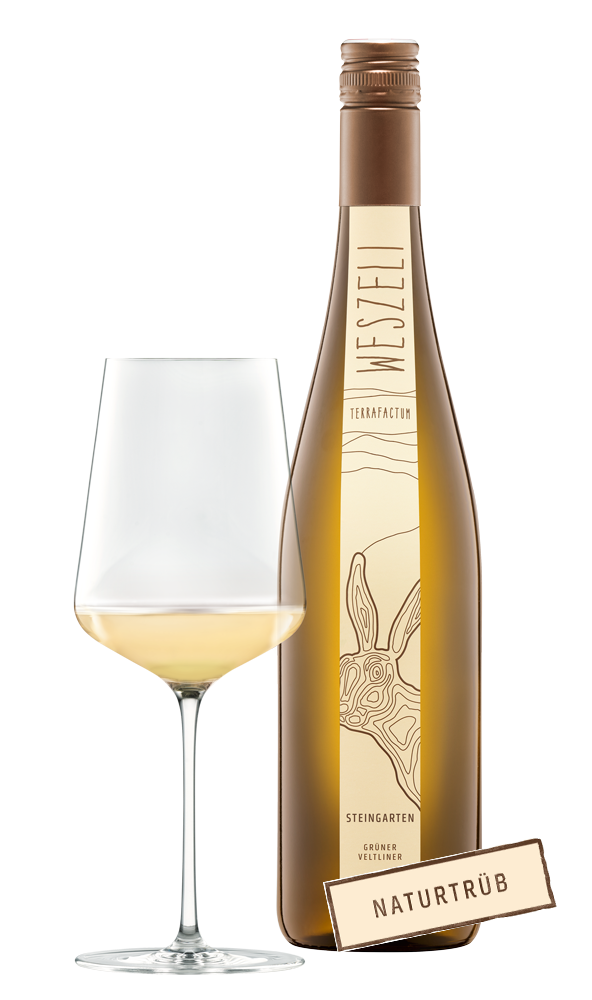
Steingarten naturtrüb
Grüner Veltliner 2019 | 0,75L
Free shipping
Pulsating, firm and mineral. Herbal and stony aromas accompany refreshing citrus notes and some stone fruit. Open and inviting. A little tannin structures and is responsible for the linear alignment towards the palate. The finish is juicy, cool and multi-layered.
| Pairs well |
Asparagus dishes, vegetarian ravioli, shellfish dishes, fried freshwater fish
|
| Origin | Steinhaus, Kamptal |
| Grape variety | Grüner Veltliner |
| 1h Decanting time | |
| 9-11°C Drinking temperature | |
| Vegan | |
| Alcohol |
12,5%
|
| Residual sugar |
1,5 g/l
|
| Acidity |
5,5 g/l
|
| Closure |
Screw cap
|
Free shipping
Versandbereit in 1-2 Werktagen
Derzeit verfügbar
For me, making wine means giving the grapes as much freedom as possible while still capturing their terroir and character as precisely as possible. What sounds simple is associated with a few large and many smaller decisions, each of which can have a lasting impact on the style. Filtering or not filtering is one of them. Filtered wines are bright, shiny and convey freshness. Unfiltered wines, on the other hand, often appear a bit cloudy, but are usually more complex in terms of flavor. Because our 1. Lage wines are known for their expressiveness, they stay in the barrel for a long time and sort of clear themselves, so we decided some time ago not to filter them anymore.
Wines that come into the bottle young, on the other hand, we are focusing on clarity, vitality and dynamism, which is why we filter them before bottling.
But then there are also wines that come early in the bottle, but build a bridge between the two styles: That’s why we have bottled the Grüner Veltliner Steingarten vintage 2019 in both a filtered and an unfiltered version. The Grüner Veltliner Steingarten was also brought into the bottle with less sulfur.
The location
The Steinhaus vineyard site is paradigmatic for the geological diversity of the vineyards of Langenlois. Here, you’ll find what constitutes Langenlois’s extensive world of rock and stone (desert sandstone is practically the only exception). Depending on where you stand, you’ll find gneiss or mica schist, amphibolite, quartz, feldspar, loess, clay, sand limestone. The slope is diverse, ranging from very steep to very flat. The upper part of the Steinhaus always has been Riesling terroir. But down below, where the soils are deeper – and where we have our vineyards – are the best conditions for Grüner Veltliner.

The ground
Planted in 1959, our vines are thriving in gneiss and limestone. The limestone is particularly important precisely because it counteracts the south-facing exposure of the vineyard with a straight, powerful focus, lending firmness and directness to the wine’s warm texture.
The grapes of the Steinhaus aren’t vinified as single vineyard wines, but actually comprise the main part of the Grüner Veltliner Steingarten.

All Facts
| OriginSteinhaus, Kamptal |
| Grape varietyGrüner Veltliner |
| Grapes planted |
| Cultivationconversion to organic farming since 2017 |
| Grapes hand-picked |
| Maceration50% mit Maischekontakt mit Kämmen über Nacht |
| Pressingwhole bunch, 5 hours |
| Alcoholic fermentationspontaneous | wild yeasts |
| Malolactic fermentation (BSA)No |
| Maturation5 months on the fine lees in stainless steel tank |
| Alcohol12,5% |
| Residual Sugar1,5 g/l |
| Acidity5,5 g/l |
| Container ClosureScrew cap |
| Decanting time1h |
| Drinking temperature9-11°C |
| Glass typeUniversal glass |
| Vegan |